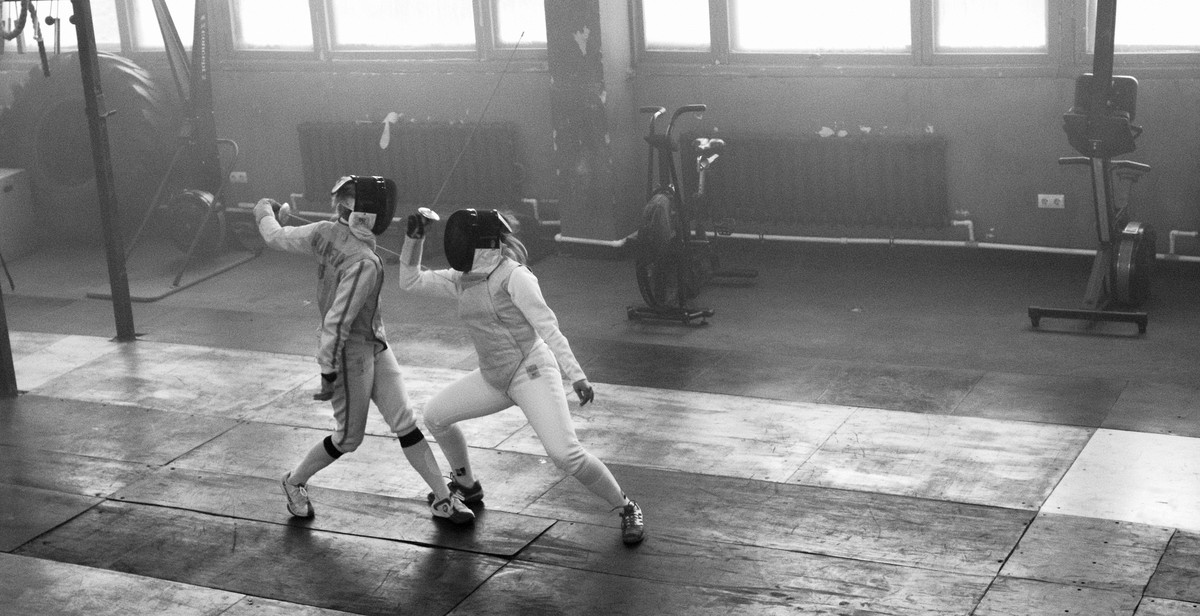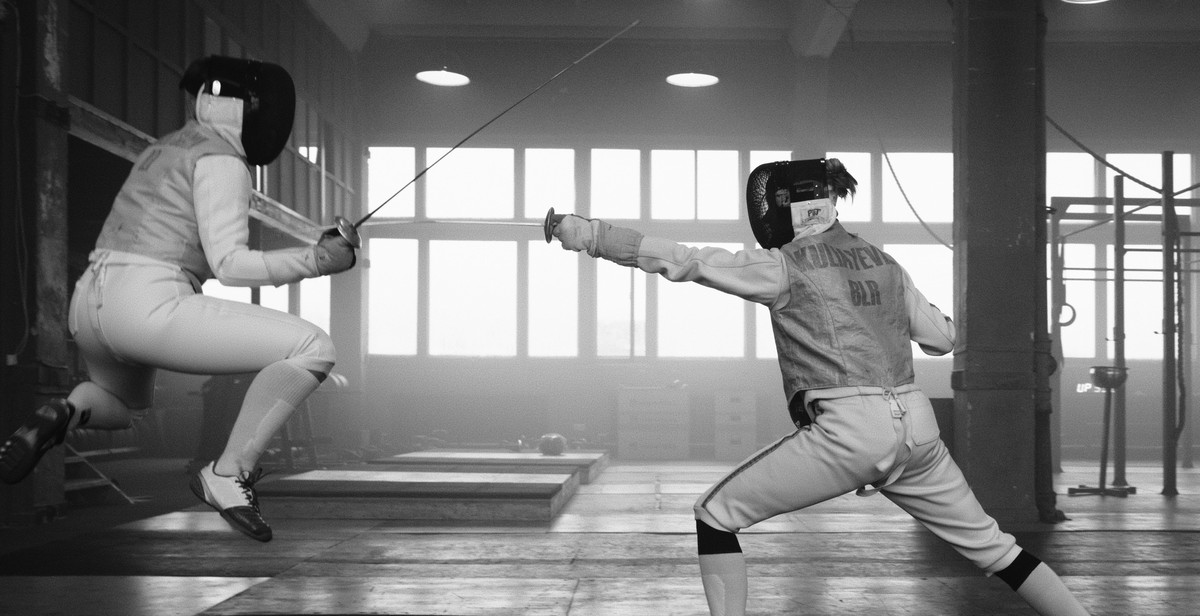How to Perform Advanced Fencing Techniques: Mastering Parries, Ripostes, and Attacks
If you are a fencing enthusiast, you know that mastering the basics is only the beginning. To become a skilled fencer, you must learn advanced techniques such as parries, ripostes, and attacks. These techniques are essential for outsmarting your opponent and gaining the upper hand in a bout. In this article, I will share my personal experience and tips on how to perform these advanced fencing techniques.
What is a Parry?
A parry is a defensive fencing technique used to deflect an opponent’s attack. It involves using your blade to block your opponent’s blade and redirect it away from your body. There are several types of parries, each with its own unique movement and purpose.
What is a Riposte?
A riposte is an offensive fencing technique that follows a successful parry. It involves quickly attacking your opponent after they have missed their attack. A riposte is a crucial technique for taking advantage of your opponent’s mistakes and gaining points in a bout.
What is an Attack?
An attack is a basic fencing technique that involves lunging forward and attempting to touch your opponent with the tip of your blade. Advanced attacks involve feints and changes in direction to deceive your opponent and create openings for successful attacks.
Mastering these advanced fencing techniques requires practice, patience, and a willingness to learn from your mistakes. By incorporating these techniques into your training, you can take your fencing skills to the next level and become a formidable opponent on the strip.

Understanding the Basics of Fencing
Fencing is a sport that involves two competitors who use a sword to score points by hitting the opponent. It requires speed, agility, and precision. Before you can master advanced fencing techniques, you need to understand the basics of fencing. This includes the equipment you need, basic footwork techniques, and basic fencing stances.
The Equipment You Need
The first step to learning how to fence is to get the right equipment. This includes a fencing mask, jacket, glove, and weapon. The weapon used in fencing is called a foil, epee, or sabre, depending on the type of fencing being practiced. Each weapon has its own set of rules and techniques.
Basic Footwork Techniques
Footwork is an essential aspect of fencing. The basic footwork techniques include advances, retreats, lunges, and jumps. These movements allow you to move quickly and efficiently, while also maintaining your balance and control.
Advances:
- Step forward with your front foot while keeping your back foot in place.
- Make sure your weight is evenly distributed between your feet.
Retreats:
- Step backward with your back foot while keeping your front foot in place.
- Make sure your weight is evenly distributed between your feet.
Lunges:
- Step forward with your front foot and bend your front knee.
- Extend your back leg behind you and touch the ground with your back toe.
- Make sure your weight is evenly distributed between your feet.
Jumps:
- Push off the ground with both feet and jump forward.
- Land with your feet together and your weight evenly distributed.
Basic Fencing Stances
There are three basic fencing stances: en garde, lunge, and retreat. Each stance has its own advantages and disadvantages, depending on the situation.
En Garde:
This is the starting position in fencing. Stand with your feet shoulder-width apart and your knees slightly bent. Hold your weapon in front of you with your arm extended.
Lunge:
This is a forward attacking movement. From the en garde position, step forward with your front foot and extend your arm to hit your opponent.
Retreat:
This is a backward defensive movement. From the en garde position, step back with your back foot to avoid your opponent’s attack.

Mastering Parries
As an experienced fencer, I know that mastering parries is essential for success in the sport. A parry is a defensive move used to deflect an opponent’s attack and create an opening for a counterattack. In this section, I will discuss the types of parries and how to execute them.
What is a Parry?
A parry is a defensive move used in fencing to block an opponent’s attack. It involves using your weapon to redirect your opponent’s blade away from you, while also creating an opening for a counterattack. Parries are an essential part of fencing because they allow you to defend against your opponent’s attacks while also setting up your own offensive moves.
Types of Parries
There are several types of parries in fencing, each designed to defend against a specific attack. Some of the most common types of parries include:
- Quarte
- Quinte
- Sixte
- Octave
- Circular
Each of these parries is executed differently and is designed to defend against a specific type of attack. As a fencer, it’s essential to learn and master each of these parries to be successful in the sport.
How to Execute a Parry
To execute a parry, you must first anticipate your opponent’s attack. As they begin to move, you should position your weapon to block their blade. The key to a successful parry is timing and precision. You must move your weapon at just the right moment to deflect your opponent’s attack while also creating an opening for a counterattack.
| Parry | Description |
|---|---|
| Quarte | Deflects an attack to the outside of your body |
| Quinte | Deflects an attack to the inside of your body |
| Sixte | Deflects an attack to the high outside of your body |
| Octave | Deflects an attack to the high inside of your body |
| Circular | Deflects an attack in a circular motion |
Overall, mastering parries is essential for success in fencing. By learning the different types of parries and how to execute them, you’ll be able to defend against your opponent’s attacks while also setting up your own offensive moves.

Mastering Ripostes
If you want to become a skilled fencer, mastering ripostes is a crucial skill to have. A riposte is a counter-attack made immediately after successfully parrying your opponent’s attack. When executed correctly, it can catch your opponent off guard and earn you points in a match.
Types of Ripostes
There are several types of ripostes you can use in fencing:
- Straight Riposte: This is a simple riposte where you extend your arm and hit your opponent with a direct attack.
- Disengage Riposte: This is a more advanced riposte where you use your blade to disengage from your opponent’s blade and then attack.
- Circular Riposte: This riposte involves making a circular motion with your blade to avoid your opponent’s blade and then attacking.
How to Execute a Riposte
Executing a riposte requires quick reflexes and precise footwork. Here are the steps to follow:
- Parry your opponent’s attack.
- Immediately extend your arm and lunge forward.
- Hit your opponent with a direct attack or use a disengage or circular motion to avoid their blade and then attack.
| Tip: | Practice your ripostes with a training partner to improve your timing and accuracy. |
|---|
By mastering ripostes, you can add an important weapon to your fencing arsenal. With practice and dedication, you can become a skilled fencer and win more matches.

Mastering Attacks
When it comes to fencing, attacking is an essential skill that every fencer must learn. An attack is a movement that is intended to hit the opponent with the tip of the blade. It is the most commonly used technique in fencing, and it can be executed in various ways.
Types of Attacks
There are several types of attacks in fencing, including:
- Straight Attack: This is a direct attack to the opponent’s target area with a straight arm and a fully extended blade.
- Disengage Attack: This is a technique where the fencer changes the line of his attack by disengaging the blade from the opponent’s blade.
- Counter Attack: This is an attack made against the opponent’s attack.
- Compound Attack: This is a combination of two or more attacks executed in quick succession.
How to Execute an Attack
Executing an attack requires proper technique, timing, and distance. Here are the steps to follow:
- Start with the proper en garde position and be ready to move.
- Identify your target area and determine the best type of attack to use.
- Close the distance between you and your opponent while maintaining proper form.
- Execute the attack with a quick and decisive movement.
- Follow through with the attack to ensure that it hits the target.
Remember that mastering attacks takes practice, so be patient and persistent in your training. With time and dedication, you will be able to execute attacks with speed and precision, giving you an edge over your opponents.

Putting it All Together: Practicing Advanced Fencing Techniques
Now that you have mastered the individual components of advanced fencing techniques such as parries, ripostes, and attacks, it’s time to put them all together and practice them in a real fencing bout. Here are some drills that can help you improve your overall fencing skills:
Drills to Improve Your Parries and Ripostes
- Parry and Riposte: This drill involves your partner making an attack, which you parry, and then immediately riposte with a counter-attack. Repeat this drill several times, alternating roles with your partner.
- Random Parry: In this drill, your partner attacks you randomly, and you must use the appropriate parry to defend yourself. After successfully parrying, riposte with a counter-attack. This drill helps you improve your reflexes and decision-making skills in a real fencing bout.
- Parry and Counter-Riposte: Your partner makes an attack, which you parry and then immediately counter-riposte with a different attack. This drill helps you improve your ability to quickly switch between different types of attacks.
Drills to Improve Your Attacks
- Attack and Disengage: In this drill, you make a simple attack, which your partner parries. You then disengage and attack again. Repeat this drill several times, alternating roles with your partner.
- Attack and Counter-Attack: Your partner makes an attack, which you avoid with a simple movement and then immediately counter-attack. Repeat this drill several times, alternating roles with your partner.
- Attack and Feint: In this drill, you make an attack, which your partner parries. You then feint and attack again. This drill helps you improve your feinting skills, which can be very effective in confusing and surprising your opponent.
| Drill | Purpose |
|---|---|
| Parry and Riposte | Improve parrying and riposting skills |
| Random Parry | Improve reflexes and decision-making skills |
| Parry and Counter-Riposte | Improve ability to switch between different types of attacks |
| Attack and Disengage | Improve attacking and disengaging skills |
| Attack and Counter-Attack | Improve counter-attacking skills |
| Attack and Feint | Improve feinting skills |

Conclusion
Mastering advanced fencing techniques such as parries, ripostes, and attacks requires dedication, patience, and practice. As a professional fencer with years of experience, I can attest to the fact that these techniques can make all the difference in a match, and can help you emerge victorious against even the toughest opponents.
Remember, it’s not just about physical strength or speed – it’s about strategy, technique, and mental agility. By staying calm, focused, and alert, you can anticipate your opponent’s moves, and use your advanced techniques to counter them effectively.
Whether you’re a beginner or an experienced fencer, there’s always room for improvement when it comes to these advanced techniques. So, don’t be afraid to seek out additional training, watch professional matches, and experiment with different techniques until you find what works best for you.
With time, effort, and dedication, you too can become a master of parries, ripostes, and attacks, and take your fencing skills to the next level.
- Practice regularly to improve your technique
- Stay calm, focused, and alert during matches
- Watch professional matches for inspiration and new ideas
- Experiment with different techniques to find what works best for you
| Technique | Description |
|---|---|
| Parries | Defensive moves that block or deflect an opponent’s attack |
| Ripostes | Counterattacks made immediately after parrying an opponent’s attack |
| Attacks | Offensive moves designed to score points against your opponent |
Keep Practicing and Improving
By incorporating these advanced fencing techniques into your training, you can take your skills to the next level and become a formidable opponent on the fencing strip. Remember to stay focused, stay determined, and keep practicing to hone your technique and become the best fencer you can be.
